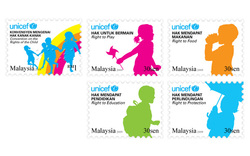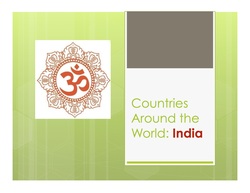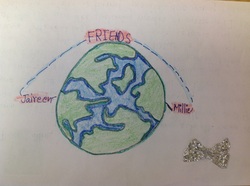Schools around the world
iEARN Learning Circle - Fall 2014
Students in the Global Leadership Odyssey class have begun an online exchange with students in Pakistan, Romania, Russia, Tunisia, Uganda, and the United States.
|
|
Exchange with Students in Kenya - Fall 2014
|
Exchange with Students in Cartagena, Colombia - Fall 2014
|
|
Declaration of the Rights of the Child
In the winter of 2014, I started a unit with my 6th graders in which we'd examine schools around the world.
Below are lesson and activity components of this unit of study.
Updated March 1, 2014
Below are lesson and activity components of this unit of study.
Updated March 1, 2014

Declaration of the Rights of the Child
Resources
Child Rights (CRC) - UNICEF
Declaration of the Rights of Children - United Nations
Convention on the Rights of the Child - UNICEF
Cartoons for Children's Rights - UNICEF
Summary on the UN Convention on the Rights of Children
UN Convention on the Rights of the Child in Child-Friendly Language
The United Nations Convention on the Rights of the Child: An Introduction - A Middle School Unit (Grades 6 - 8)
Resources
Child Rights (CRC) - UNICEF
Declaration of the Rights of Children - United Nations
Convention on the Rights of the Child - UNICEF
Cartoons for Children's Rights - UNICEF
Summary on the UN Convention on the Rights of Children
UN Convention on the Rights of the Child in Child-Friendly Language
The United Nations Convention on the Rights of the Child: An Introduction - A Middle School Unit (Grades 6 - 8)
 Student work by Kai M., 2014
Student work by Kai M., 2014
Countries at 35 Degrees North
First, I wanted to establish a grounding in location - exact and relative.
I reviewed the concepts of latitude and longitude. We discussed how and why Albuquerque, New Mexico is at
Albuquerque - 35.1107° N, 106.6100° W.
Using world maps, I then asked students to work in groups and to identify countries through which 35 degrees north crosses.
I wanted to use latitude as a comparative quality through which to look at countries around the world.
Next, I introduced students to the CIA World Fact Book and the types of information that can be found using this resource. Using the United States, we looked at and discussed how we can can make inferences about data regarding the following:
Students were assigned a research activity that you can see and download here.
Students presented their work in class which provided a rich venue to compare and contrast places in the world. You can see student work here.
Resources:
Latitude and Longitude multimedia lesson
CIA World Fact Book
First, I wanted to establish a grounding in location - exact and relative.
I reviewed the concepts of latitude and longitude. We discussed how and why Albuquerque, New Mexico is at
Albuquerque - 35.1107° N, 106.6100° W.
Using world maps, I then asked students to work in groups and to identify countries through which 35 degrees north crosses.
I wanted to use latitude as a comparative quality through which to look at countries around the world.
Next, I introduced students to the CIA World Fact Book and the types of information that can be found using this resource. Using the United States, we looked at and discussed how we can can make inferences about data regarding the following:
- population
- life expectancy and connections to infant mortality rates, fertility rates, and literacy rates
- education
- status of women
Students were assigned a research activity that you can see and download here.
Students presented their work in class which provided a rich venue to compare and contrast places in the world. You can see student work here.
Resources:
Latitude and Longitude multimedia lesson
CIA World Fact Book

Letter Exchange with students from India
This year, my three classes have had the opportunity to correspond - via mail - with students in Siliguri, West Bengal, India, through a non-profit organization called Be the Change.
You can photos of letters here.
The Essential Question I posted for students to consider Why is it important to learn about people from around the world?
One of my primary goals as a teacher is to build global citizenship skills among our students, in support of our charter and the need for globalized citizens in the 21st Century. In that spirit, I offer a list of characteristics of a global citizen as described by Oxfam.
The Global Citizen
This year, my three classes have had the opportunity to correspond - via mail - with students in Siliguri, West Bengal, India, through a non-profit organization called Be the Change.
You can photos of letters here.
The Essential Question I posted for students to consider Why is it important to learn about people from around the world?
One of my primary goals as a teacher is to build global citizenship skills among our students, in support of our charter and the need for globalized citizens in the 21st Century. In that spirit, I offer a list of characteristics of a global citizen as described by Oxfam.
The Global Citizen
- is aware of the wider world and has a sense of their own role as a world citizen
- respects and values diversity
- has an understanding of how the world works
- is outraged by social injustice
- participates in the community at a range of levels, from the local to the global
- is willing to act to make the world a more equitable and sustainable place
- takes responsibility for their actions.